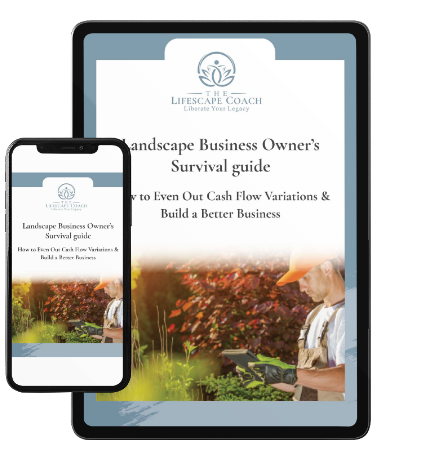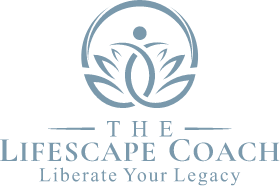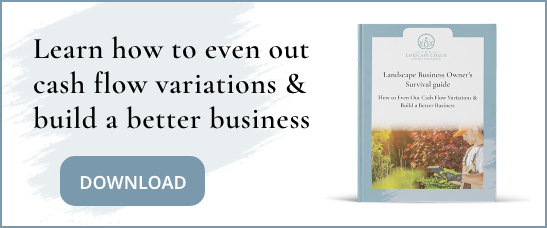5 Ways that 2020 Taught Me to Show Up Better at Work
People typically don’t show up as their best selves when they’re feeling scared, threatened, or confused. Maintaining clarity about your personal and professional value is hard in that environment, so feeling self-empowered at work goes right out the window. As a business owner, this can be a recurring reality as you navigate the ebbs and flows of your ownership journey, but add a pandemic into that equation and you can feel the internal chaos in a hot minute. That’s why it is essential for business owners (with the help of your management team, if you have one) to develop, deliver, and nurture a strong company culture based on tightly bound operations and expectations within your business. If you are unclear about what’s okay and not okay at work, you will struggle, because if you don’t know, how can anyone else?
This has never been more important - or more difficult - than in 2020. And while I certainly struggled through, here are the top 5 things I learned that helped me come out stronger on the other side.
1. As an owner, you need to set clear business operational boundaries.
To run a smooth operation, you must know your business boundaries and articulate them through your purpose, mission, values, policies, and procedures. This means that what’s “OK” and “Not OK” within company operations and culture needs to be very clearly laid out, and that is the owner’s responsibility. I know this is a lot of work and doesn’t sound at all fun. But, how fun is it to chase employees who aren’t doing things the way you want them to be done?
A recurring lament that I hear from business owners is that they feel like they have to check everything to make sure it’s done right. I don’t need to tell you that in the long run, this is both impossible and a huge hindrance to business growth.
The best way to build trust with your staff is to clarify the end game so everyone has crystal clear expectations for the end results. Brene Brown, in her book Dare to Lead, talks about “Painting It Done” as a way to be super-duper clear about what you expect from your team. She says, go all the way to the finished product or project and share what that deliverable outcome looks like, feels like, and what value it offers. Then, trust your people to deliver that in the very best way they know-how. This is better than giving the steps to get something done because it allows them to be autonomous in the “how” when they are so totally clear about the final expectations. The assumption here is that they have the “know-how” - this isn’t a technique used with untrained novices.
An example of this at my company is when we send a crew to “Fine Garden.” Fine Gardening is a complex service, so it’s not really feasible to explain all of what it is and each of the tasks involved to every crew member at every job site. Ideally, I’d love to be able to tell my crew leaders to go to a property and “Fine Garden,” then trust in their understanding of our training materials and their own experience to lead their crews to success and deliver exceptional results to our clients.
But if there are lapses in understanding, or if the boundaries aren’t communicated well, things start to break down. It can be very frustrating for staff when the message isn’t clearly articulated, and for the owners when the staff doesn’t “get it” or asks questions that take time away from production to explain.
This mixed messaging within your team leads to working at cross purposes, which creates costly mistakes and expensive inefficiencies in job fulfillment, not to mention the personal angst and frustration that chips away at morale. If you are not operating from clarity about what you do, why and how you do it, and the value that you offer, then you will not be able to offer this clarity to your team.
2. Commit to safe operations and involve your employees
Reporting systems have always been important, but never more so than with the arrival of COVID-19. If something goes wrong, it must be reported so that things can be made right again. On top of that, it needs to happen without vilifying or shaming anyone, or else the system will never work.
We were so lucky to have built a robust safety program over the past three years that primed our company to face the COVID safety measures head-on. While I recognize that it is a luxury for a business to have a designated safety officer position, every company must have at least some safety systems in place to stay operational. What’s more, these systems need to help employees know how to show up and operate safely at work.
What I noticed in 2020 was a shift from personal safety to group safety. The normal resistance I had experienced around safety protocols over the years all but evaporated as we learned how to function with everyone’s well-being in mind. In the end, as landscape professionals, we must always be thinking about public safety when building features, driving on the roads, or taking up space in public ways. Now, we were thinking about one another in a new way and that hit home when we realized that it would be impossible to social-distance in the cab of a truck.
Our solution (and I believe that of many trade companies) was to move to a driver-only cab with the crew following in their own vehicles. Easy enough solution, but we quickly learned that this posed issues too. Pay for time, for fuel, for wear and tear - how did that all work? At TGC we hadn’t needed to deal with this in the past.
To come up with the best solution, we had to lean into the discomfort of not having an answer and ask for input from our teams and then research with our professional partners to come up with an equitable solution that was also economically viable.
This collaborative effort kept production running at full steam throughout the year and helped everyone show up better as a result. If you plan to hire new employees that will seamlessly integrate with your current social structure in 2021, then getting your employees interested in their own safety as well as group safety is a crucial task.
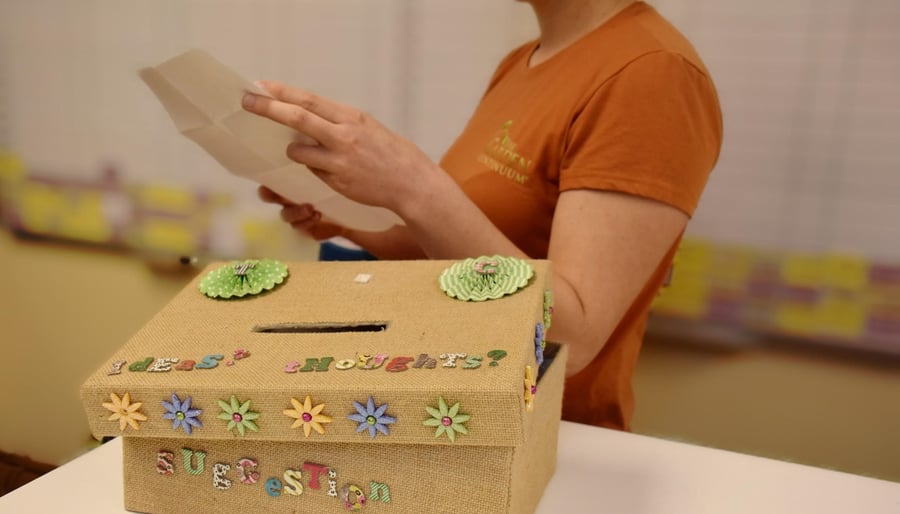
3. Combat uncertainty by developing SOPs
It’s one thing to know that you need clear boundaries and operational systems in place, but how do you actually get it done?
One of our big ongoing projects is developing Standard Operating Procedures. The goal behind writing these SOPs is to have comprehensive, intuitive documentation on all of our procedures to give the staff something to fall back on when the boundaries start feeling unclear.
But SOPs are living documents that need to be tended to like a garden every year. As a business grows and operations expand, it’s often the reality that SOPs get edited. This is good, it keeps things fresh and current. The problem is that you can get caught up in editing for perfection and never finish.
Truth be told, that was my stumbling block. Finally, in 2019, we made a strong effort to gather all of our outdated and dusty documents and dive into refreshing them. We made some great headway and in early 2020 presented our spring SOP documents to all of the staff, new and old, and reviewed our expectations. We were “off to the races!”
One month into operations in 2020, we hit a wall because we had to work harder than ever just to keep production going with new safety concerns. The behind-the-scenes work efforts to continue the SOP development and training fell by the wayside. Had we committed to this project a couple of years ago, we would have had everything we needed to keep staff empowered with clarity, while we dealt with the new uncertainties in our midst.
Alas, that wasn’t our reality so we used what we had and adopted a “wing it” approach. In a pinch, this works with a strongly bonded crew but can pose tricky when trust is missing. Luckily, the team that worked with us on the SOP project in 2019 is still employed at TGC and understands fully the value of resurrecting this project. So… we are prepping for the races again!
4. Nurture a trust bond with your employees to help you get through hard times
Like I said at the beginning of this blog, when you feel fearful, threatened, or confused about something, it is really hard to show up as your best self. And at one point - I’d say around the end of June - I was definitely surprised this thing wasn’t over yet, and I was hitting a wall with this triage pace.
As the months passed by, I saw some unraveling of morale. Imposter syndrome was setting in as my clarity on how to lead my people and company through this pandemic was fading. I realized it was time to wake up and reconnect with my staff about what we were doing this year. The trouble was… I didn’t know!
That’s when I decided to one-on-one sit down with every single person in my company to have a heart to heart conversation about where the company stood, how I felt about it, and how they were feeling both personally and professionally. By the middle of August, I had met with everyone - which for me is 18 people. After that, I saw a visible difference in the morale of the company and our productivity began to soar. I also felt better personally and was able to take a step back and objectively work through some critical issues which reinforced my leadership confidence.
All too often, owners think they have to shoulder the burden of leadership alone. I, as much as anyone, can fall into that trap when times are uniquely challenging. But now, it was my turn to do a trust fall into my team. I hired each person for a reason. I knew what skills they had to offer, and I believed in their interest in being a valued member of a company, so that had to mean there was inspiration to be found in engaging them in the solution.
5. Sharing your vision for the company broadly and narrowly gives your team a path to success, even if the route needs to change
In 2020, I had a great vision for our growth and development. I laid it all out on paper and I delivered a participation agreement that all six of my managers were invited to sign. This agreement laid out my expectations clearly - point by point. It required that if you signed the agreement you were 100% clear on my intent for the functions of this team and you had all your questions answered to your total satisfaction. By the end of January, I had received all six signatures and we were ready to crush 2020.
Enter pandemic.
Now what? I never rewrote that agreement. I never reset the vision. I never changed my expectations. What I did was go into triage-mode, flipping the switch to tactical maneuvers, and got busy working with my legislative partners in making sure that landscape companies would be granted permission to continue working under strict safety guidelines.
I must applaud all of the TGC staff for winging it when we needed to and putting up with the shifts, false starts, and juggling that was needed to navigate the fall out of the pandemic. As much as I wanted to deliver clarity, sometimes I just couldn’t. I had to say things like, “Trust me, we’ll figure it out,” which didn’t feel very leader-like.
Yes, it’s my job at the start of every year by reporting on the successes and failures of the year past, then outlining my vision for the year ahead of us. But if there is a crisis, it’s better to take the vision and read through it with your team and say, “This goes and this stays,” and then take the time to make a working draft of an update. This is something I did not do and wish I had. I think I recovered well, but I learned that I have to be clear on whatever it is I’m doing, even if it’s not perfect or will change in a month (or a week as 2020 seemed to do). If your vision needs to change, it’s more empowering for everyone to work collaboratively and in real-time to set and reset the direction for the future.
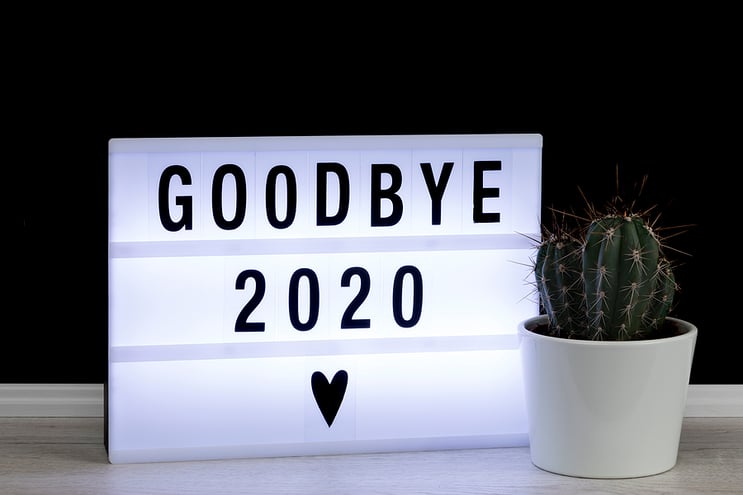
So, what have I learned?
What I’m taking away from 2020 is that authentic vision and purpose in business doesn’t need a lot of fanfare. It needs to be spoken out loud and then predictably tended by the leader of a company throughout the year - pandemic or no. Owners must lean into trusting that their people can and will get behind their purpose and mission and be able to roll with the uncertainties that may crop up and rock the boat. That level of trust and openness by a leader makes it all the more okay when someone decides they need to check out because there is no alignment for them.
When we as leaders can make time to get our people together to discuss what’s coming up, ask for their opinions, and be as still as we can while they speak, we will uncover the gems of their brilliance. Remember that the solutions you come to through collaboration are generally going to be more successful than the ones that trickle down from owners and management teams without any discussion with the crews.
Let 2021 be a year to lean into not knowing it all and committing to being authentically you. I plan to make 2021 a year for engaged listening and radical team building at TGC.
What’s your plan?
Landscape Business Owners Survival Guide
